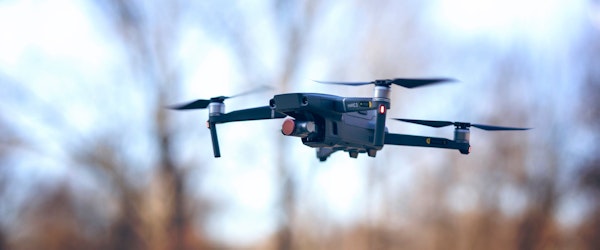
Smart Inspections: Keeping Up with Impacts of Severe Weather Storms
Thursday, August 26th, 2021 Krishnan Hariharan Kespry2020 was a record year for severe weather, with 22 billion-dollar weather and climate disasters. It was the sixth consecutive year in which 10 or more billion-dollar disaster events occurred in the U.S.
As a result, insurance professionals were greatly backlogged and putting themselves in harm's way to inspect damaged properties. So, how can they keep up with the rising demand of insurance claims during severe weather season while keeping themselves safe? Enter autonomous drones and the rise of the Smart Inspection.
What is a Smart Inspection?
Smart Inspections leverage drone technology, cloud-based analytics, Artificial Intelligence (AI), machine learning and high-resolution imagery to enable the insurance industry to perform completely touchless surveys and inspections of residential and commercial properties in half the time.
With Smart Inspections, insurance pros no longer need to manually climb on roofs to inspect damage caused by severe weather. Instead, they can simply use a tablet to man an AI-powered drone, which will then autonomously fly the perimeter selected, capture aerial imagery and send the data to the cloud to be analyzed. Then it will land on its own, and all the insurance pro had to do was press a few buttons on an iPad.
Smart Inspections Keep Workers Safe and Sound
With all the technology available to us today, it begs the question: Why on earth are insurance pros still performing home inspections manually? Having inspectors climb atop roofs and collapsing buildings to gather data is not only dangerous, but it’s a liability and impacts the customer experience. If the reason an insurance claim is being filed is because the roof or building’s structural integrity is questionable, then sending a person to climb said building is innately dangerous.
With Smart Inspections, insurance pros avoid pulling out shaky ladders and leaping across questionable roofs that were wrecked by major storms. Instead, they can simply pull out their iPads, outline a flight path for a drone to fly autonomously, and get the data they need safely and efficiently.
Smart Inspections Bring the Speed
Not only are Smart Inspections significantly safer than manual inspections, but they also take significantly less time to perform. Once a claims adjuster sets the perimeter for the drone, the drone does the rest -- it gathers the data needed in minutes, uploads it to the cloud in mere moments, and then the data is available to all who need it for analysis.
Drones fly much faster than a person can walk and can easily reach areas that prove difficult for humans. For example, if a roof is severely damaged and lacks structural integrity in a certain area, the insurance pro would have to strategically plan how they access the area, wasting precious time, and putting themselves in danger. The drone, on the other hand, can quickly fly over this area of the roof and gather the data needed.
In addition to drones completing roof inspections at hyperspeed, they also share the data in record time. Once the drone completes its flight path, it sends the data it captured to the cloud so that the claims adjuster has it at their disposal within minutes, and the team back at the office can review it at the same time. As a result, quick decisions regarding the insurance claim and state of the roof can be made, and teams can collaborate on and off-site.
Smart Inspections Bring Unmatched Accuracy
Powered by machine learning and AI, autonomous drones are always improving how they fly and collect and analyze data. They possess the ability to collect high-resolution aerial photography and videography, and can account for the pitch and slope of a rooftop to ensure roof measurements are extremely accurate.
While traditional forms of claims adjusting are prone to human error (even the best of us make mistakes!), with Smart Inspections, insurance pros can be certain their data is nearly perfect every time, with accuracy in the 1-3% range.
Smart Inspections are a Necessity
With severe weather demands growing greater year by year, the answer is clear -- insurance pros should consider adopting Smart Inspections if they wish to keep up. Smart Inspections keep insurance employees out of harm’s way, while improving data accuracy and saving insurance companies time and money. Autonomous drones represent the future of building inspections and will soon become ubiquitous, meaning insurance companies should consider adopting them now or risk being outpaced by their competition.
Krishnan Hariharan is President and CEO of Kespry.
Recent Provider Listings
Serving Kansas, Missouri & Oklahoma Statewide
Kansas
Missouri
Oklahoma
Fire Investigations
